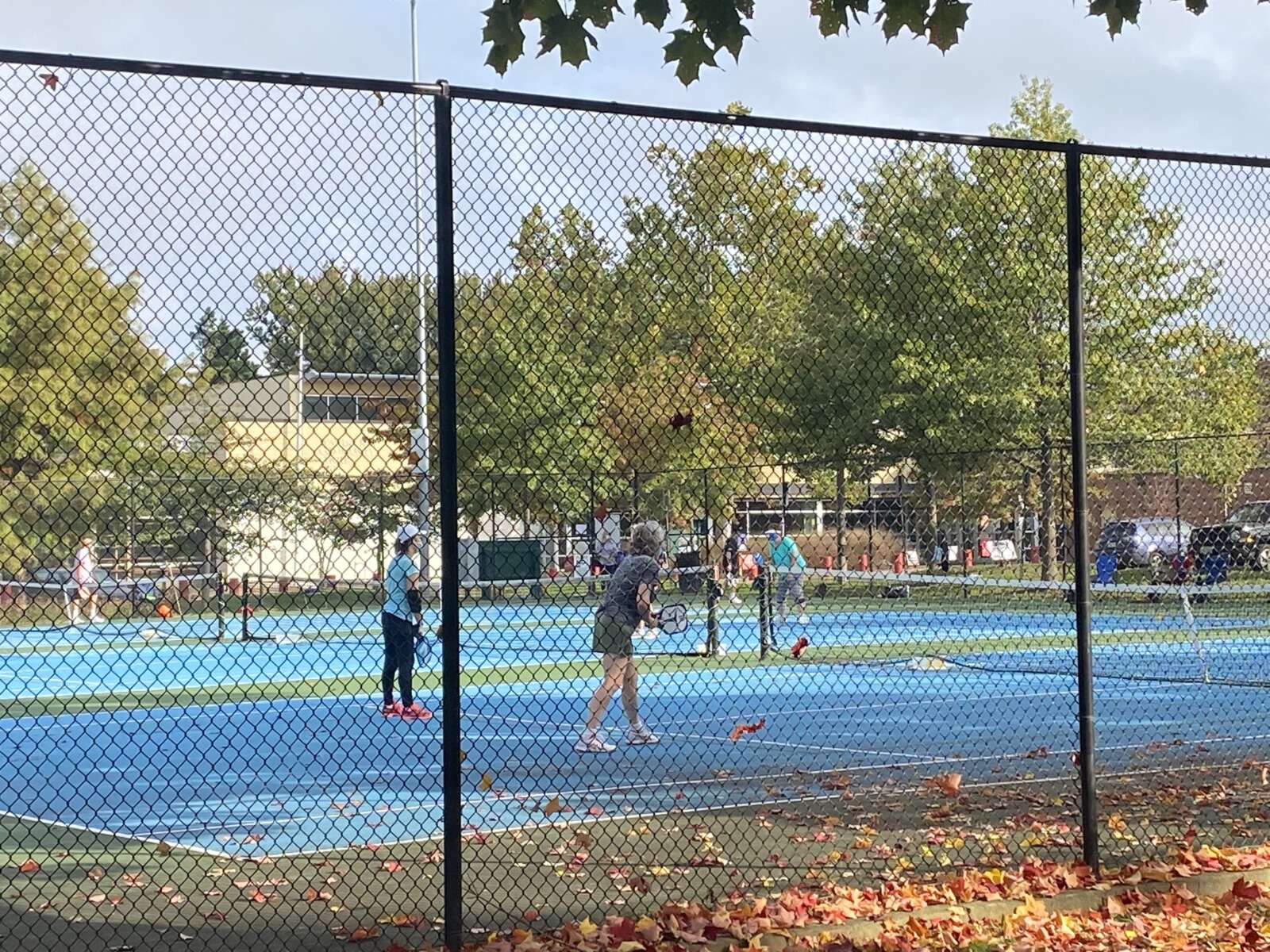Key Takeaways:
- Pickleball’s popularity has brought attention to the issue of noise, which can be disruptive and impact the overall playing experience.
- Noise reduction is important for players, spectators, and the surrounding environment.
- Innovative paddle designs, noise-reducing pickleballs, and specialized court surfaces have been developed to minimize noise in pickleball.
- Players can employ techniques such as controlled serves, using topspin for slam shots and volleys, and focusing on proper footwork to reduce noise levels.
- Creating a quieter pickleball environment involves implementing soundproofing strategies for indoor courts, exploring quieter outdoor court materials, and building community awareness about noise control.
1. Understanding the Noise Issue in Pickleball
Pickleball, a popular sport combining elements of tennis, badminton, and table tennis, has seen tremendous growth in recent years. However, with its rise in popularity comes a persistent issue: noise. The sound of paddles hitting the ball and the ball bouncing off the court can be disruptive and annoying to both players and those nearby. In order to address this problem, it is important to understand the science behind the sound barrier, the reasons why noise reduction matters, and the impact noise can have on players and their surroundings.
The Science Behind the Sound Barrier
Sound is created when an object vibrates, and these vibrations travel in waves through a medium, such as air or water. In the case of pickleball, the sound is produced when the paddle strikes the ball and when the ball makes contact with the court surface. The force of these impacts generates vibrations that propagate as sound waves, reaching the ears of players and anyone nearby. The intensity of the sound is measured in decibels (dB). The average conversation is around 60 dB, while a busy city street can reach 85 dB. In pickleball, the sound levels can vary but often exceed 90 dB, making it comparable to a lawnmower or a motorcycle.
Why Noise Reduction in Pickleball Matters
The excessive noise in pickleball can affect the overall playing experience for both players and spectators. High noise levels can be distracting, leading to decreased concentration and performance. It can also be a barrier to entry for new players, as the noise may be perceived as disruptive or intimidating. Additionally, noise pollution can have negative effects on the surrounding environment and residents. Pickleball courts located near residential areas can generate complaints from neighbors who are disturbed by the constant noise. It is essential to find ways to reduce noise levels to create a more enjoyable and harmonious playing environment.
The Impact of Noise on Players and Surroundings
The loud noise produced in pickleball can have various impacts on players. Firstly, it can cause auditory fatigue, leading to decreased focus and cognitive performance. Prolonged exposure to high noise levels can also contribute to hearing damage, putting players at risk of long-term hearing loss and other related issues. In terms of the surrounding environment, noise pollution can not only disturb nearby residents but also impact wildlife in the area. Animals, such as birds and squirrels, may be scared away by the loud sounds, disrupting the natural balance of the ecosystem. Therefore, it is crucial to consider the impact of noise on both players and the environment and strive for innovative solutions to reduce noise levels in pickleball.
2. Innovative Equipment for a Quieter Game
In recent years, manufacturers and designers have recognized the need for quieter pickleball equipment. Their innovations have led to the development of paddles, balls, and even court technologies specifically designed to minimize noise. These advancements not only help create a more pleasant playing experience but also contribute to the overall reduction of noise pollution in the sport.
Revolutionary Paddle Design to Minimize Noise
Paddle design plays a vital role in noise reduction. Manufacturers are now utilizing advanced materials, such as polymer cores and textured surfaces, to dampen vibrations and minimize the sound produced upon impact. These innovations help to absorb the energy of the paddle hitting the ball, resulting in a quieter and more controlled sound. The shape and weight distribution of the paddle also impact noise levels. Paddle designs with wider faces and thicker cores tend to produce less noise compared to those with smaller faces and thinner cores. The larger surface area of the paddle face spreads the impact energy over a larger area, reducing the intensity of the sound generated.
Noise-Reducing Pickleballs: What You Need to Know
Pickleballs, the small plastic balls used in the sport, have undergone significant advancements in noise reduction as well. Manufacturers have developed specialized pickleballs that are engineered to minimize sound without compromising performance. These noise-reducing pickleballs are typically constructed with a higher density material and include a foam or rubber layer within the core. The added layers help absorb impact energy, resulting in a softer impact sound without sacrificing the ball’s playability. It is important for players to select pickleballs specifically designed for noise reduction to contribute to a quieter game.
Exploring Noise Dampening Technologies for Courts
In addition to innovative equipment, advancements in court technologies have also contributed to reducing noise in pickleball. Specialized court surfaces, such as cushioned or rubberized materials, are designed to absorb impact energy and minimize sound reflection. These noise dampening court surfaces help to reduce the overall noise levels in the playing area. They also provide additional benefits, such as improved shock absorption, which can reduce the risk of joint injuries for players. Exploring the use of these technologies in both indoor and outdoor pickleball courts can significantly contribute to a quieter game.
3. Effective Techniques to Reduce Noise Levels
In addition to utilizing innovative equipment, players can employ effective techniques to further reduce noise levels during gameplay. Mastering the art of a quieter serve, adopting specific strategies for slam shots and volleys, and paying attention to footwork can all contribute to minimizing the noise generated on the court.
Mastering the Art of a Quieter Serve
The serve is a fundamental part of pickleball and can generate significant noise. To minimize the sound produced, players can focus on using more controlled and precise paddle movements. A gentle and controlled impact on the ball reduces the noise compared to a forceful strike. Players can also experiment with different paddle angles and ball contact points to find the optimal combination that produces less noise. By practicing and refining their serving technique, players can significantly contribute to a quieter game.
Tips and Tricks for Quieter Slam Shots and Volleys
Slam shots and volleys often result in louder impacts due to the speed and power involved. However, players can adopt strategies to reduce the noise produced during these shots. One effective technique is to use more topspin, as it helps absorb some of the impact energy and reduces the noise generated. Additionally, players can focus on hitting the ball with a more controlled and compact swing, rather than a wild and forceful swing. This allows for better accuracy and control, while also reducing the intensity of the impact sound.
The Role of Footwork in Noise Reduction
While equipment and shot techniques significantly impact noise levels, players should not overlook the importance of footwork in noise reduction. Proper footwork can help players maintain balance and stability, resulting in more controlled movements that generate less noise on the court. By focusing on light and precise footwork, players can minimize the impact force during their movements, thus reducing the overall noise levels. Additionally, wearing proper footwear with cushioning and grip can further contribute to noise reduction and enhance the player’s overall performance.
4. Creating a Quieter Pickleball Environment
To truly combat the issue of noise in pickleball, efforts must extend beyond individual players and aim to create quieter pickleball environments. This involves implementing soundproofing strategies for indoor pickleball courts, exploring the future of quieter outdoor courts, and building community awareness about noise control in the sport.
Soundproofing Strategies for Indoor Pickleball Courts
Indoor pickleball courts often present more challenges in noise containment due to the enclosed space. However, soundproofing techniques can significantly reduce noise levels and create a more pleasant playing environment. One effective strategy is the installation of acoustic panels on walls and ceilings, which helps absorb sound waves and reduce echoing. The use of sound-absorbing flooring materials, such as rubber or cork, can also minimize impact noise. Additionally, creating dedicated practice areas with soundproofing partitions can further contribute to noise reduction while allowing players to warm up and train.
The Future of Quieter Outdoor Pickleball Courts
The development of quieter outdoor pickleball courts is an area of ongoing research and innovation. Manufacturers and designers are exploring materials and construction techniques that can effectively dampen noise while maintaining the durability and playability of the courts. One potential solution is the use of specialized rubberized court surfaces that absorb impact energy and reduce sound reflection. These surfaces can be combined with noise-reducing equipment to create a more enjoyable playing experience for both players and spectators. By investing in the development of quieter outdoor courts, communities can promote the growth of pickleball while minimizing its impact on the surrounding environment.
Building Community Awareness about Noise Control
Raising awareness about the impact of noise in pickleball is crucial for fostering a more considerate and respectful playing environment. Communities can organize workshops and educational sessions to educate players about noise control techniques and the importance of utilizing quieter equipment. Building strong communication channels between players, clubs, and local residents can also help address any concerns and find mutually beneficial solutions. By fostering a sense of community responsibility, players can actively contribute to creating a quieter pickleball experience for everyone involved.
In conclusion, breaking the pickleball sound barrier requires a multifaceted approach. By understanding the science behind sound and its impact on players and surroundings, players can appreciate the importance of noise reduction. Utilizing innovative equipment, adopting effective techniques, and creating quieter environments are all essential steps towards achieving a more peaceful and enjoyable pickleball experience. With ongoing research and community efforts, players can continue to innovate and implement strategies that make the sport quieter, ultimately enhancing the overall enjoyment and sustainability of pickleball.
FAQ
Question: What is the science behind the sound barrier in pickleball? – Sound is created when an object vibrates, generating vibrations that travel as waves through a medium. In pickleball, sound is produced when the paddle strikes the ball and when the ball makes contact with the court surface. The intensity of the sound is measured in decibels (dB), and pickleball sound levels can exceed 90 dB.
Question: Why does noise reduction in pickleball matter? – Excessive noise in pickleball can affect the overall playing experience and be distracting. It may also deter new players from joining the sport. Noise pollution can also disturb nearby residents and impact wildlife, disrupting the natural balance of the ecosystem.
Question: What are some innovative equipment advancements for a quieter game? – Manufacturers have developed paddle designs with advanced materials, such as polymer cores and textured surfaces, to dampen vibrations and minimize sound. Noise-reducing pickleballs are engineered with higher density materials and added layers to absorb impact energy. Specialized court surfaces, like cushioned or rubberized materials, help absorb impact energy and minimize sound reflection.
Question: What techniques can players use to reduce noise levels during gameplay? – Players can focus on controlled serves with precise paddle movements, experiment with different paddle angles and ball contact points, and use more topspin for slam shots and volleys. Proper footwork can also minimize impact force and noise levels on the court.
Question: How can a quieter pickleball environment be created? – Soundproofing strategies can be implemented for indoor courts, such as installing acoustic panels on walls and ceilings and using sound-absorbing materials for flooring. The future of quieter outdoor courts involves exploring specialized rubberized surfaces and combining them with noise-reducing equipment. Building community awareness about noise control and organizing educational sessions can also contribute to a more considerate playing environment.
Question: What are some benefits of utilizing quieter equipment in pickleball? – Quieter equipment enhances the overall playing experience and reduces distractions. It also contributes to minimizing noise pollution and preserves the natural balance of the surrounding environment.
Question: How can community awareness about noise control be raised? – Communities can organize workshops and educational sessions to educate players about noise control techniques and the importance of utilizing quieter equipment. Establishing communication channels between players, clubs, and local residents can also help address concerns and find mutually beneficial solutions.
Question: How does noise reduction contribute to the enjoyment and sustainability of pickleball? – By creating a more peaceful and enjoyable pickleball experience, noise reduction enhances player satisfaction and encourages more people to participate in the sport. It also promotes the growth of pickleball while minimizing its impact on the surrounding environment.





